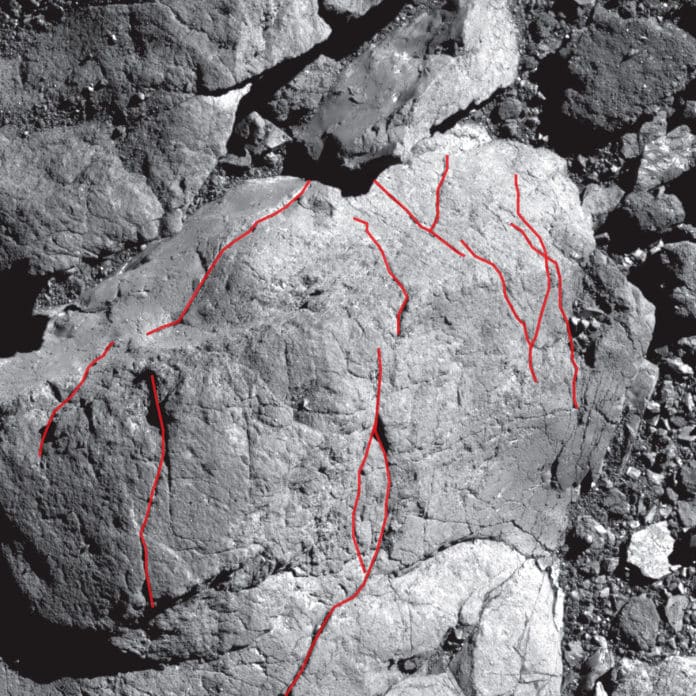It was thought that surface regeneration on asteroids must take a few millions of years. However, a new study by surprised scientists suggests- it happens so quickly.
Scientists from NASA’s OSIRIS-REx mission recently learned that surface regeneration happens much quicker on asteroids than on Earth. By analyzing images of the asteroid (101955) Bennu obtained by the OSIRIS-REx mission, scientists found that the Sun’s heat fractures rocks on Bennu in just 10,000 to 100,000 years.
Marco Delbo, senior scientist at Université Côte d’Azur, CNRS, Observatoire de la Côte d’Azur, Laboratoire Lagrange, Nice, France said, “We were surprised to learn that the aging and weathering process on asteroids happens so quickly, geologically speaking. This information will help us estimate how long it takes boulders on asteroids like Bennu to break down into smaller particles, which may either eject into space or stay on the asteroid’s surface.”
Likewise, how a cold glass breaks under hot water, rapid temperature variations on Bennu cause internal stress that fractures and breaks down rocks. On Bennu, the Sun rises every 4.3 hours. Daytime highs near the equator can reach almost 260 F (about 127 C), and nighttime lows plummet to nearly minus 10 F (about minus 23 C).
In the images obtained from OSIRIS-REx, scientists spotted cracks in the rocks. These fractures seemed to point in the same direction.
Delbo said, “A distinct signature that temperature shocks between the day and the night could be the cause.”
Scientists measured the length and angles of more than 1,500 fractures in OSIRIS-REx images by hand: some shorter than a tennis racket, others longer than a tennis court. They found the fractures predominantly aligned in the northwest-southeast direction, indicating they were caused by the Sun, which is shown here to be the primary force changing Bennu’s landscape.
Delbo said, “If landslides or impacts were moving boulders faster than the boulders were cracking, the fractures would point in random directions.”
Later, using a computer model and their fracture measurements, scientists calculated the 10,000 to the 100,000-year timeframe for thermal fractures to propagate and split rocks.
Christophe Matonti, a co-author of the paper at Université Côte d’Azur, CNRS, Observatoire de la Côte d’Azur, Géoazur, Sophia-Antipolis, Valbonne, France said, “The thermal fractures on Bennu are quite similar to what we find on Earth and on Mars in terms of how they form. It is fascinating to see that they can exist and are similar in very ‘exotic’ physical conditions [low gravity, no atmosphere], even compared to Mars.”
Jason Dworkin, an OSIRIS-REx project scientist at NASA’s Goddard Space Flight Center in Greenbelt, Maryland, said, “Keep in mind, the topography of Bennu is young, but the rocks on the asteroids are still billions of years old and hold valuable information about the beginning of the solar system.”
Journal Reference:
- Delbo, M., Walsh, K.J., Matonti, C., et al. Alignment of fractures on Bennu’s boulders indicative of rapid asteroid surface evolution. Nat. Geosci. 15, 453–457 (2022). DOI: 10.1038/s41561-022-00940-3
